Apples, the ubiquitous fruit that we’ve been told is our panacea to health; one a day, of course. They are symbolic gifts for teachers, the autumn drinking beverage of choice (pre-PSL brouhaha), the no-wrapper-required snack of millions — billions? — of lunch boxes. The apple reaches nearly every corner of the world, it probably finds its way onto every plane in the sky and every continental hotel breakfast table on the planet. With remarkable shelf-life and storage potential, it has fed us and entertained us for millennia. Some of babies’ first solid foods will include applesauce. Apple pie has its own creation story. Cider, much like the cacao drinks of South America and Mesoamerica, was also an ancient beverage. In Spain, the country I call home these days, northern residents were fermenting apples before the birth of Christ to make their sidra (sagardo in Basque). We know that very hungry caterpillars enjoy them too.
It turns out apples are not that forbidden after all — we are very fond of them and they are very embedded in our lives and those of many of our ancestors. But do we really know about them? Could we recount cultivars outside of the big three or four with prominent color-forward and Anglo-Saxon names? Those sold waxed and perfect, ready for their close-ups. Or can artists, farmers, and food activists show us that when we accept what is put in front of us — not sought out — we only experience part of the bounty, and lose much of the flavor, diversity, and curiosity of what makes-up the world of Malus (the apple genus).
William Mullan is one of those fascinating and creative individuals putting the “outcasts” on display. The wrinkled, warped, lopsided, sooty, and speckled…is odd to our trained and manipulated eyes and palates. Too odd for the perfectly stacked produce stands, glossy marketing campaigns, and beauty standards we’ve been conditioned to accept as virtue, as progress, as expectation.
However, odd is oddly beautiful, and deeply needed for this oddly modern predicament of where humanity sits on the precipice at this time. If we can stand the force-fed systems of inequality and injustices, of mediocrity, of corruption - if unblemished normalcy is what so many strive to return to following the pandemic, I for one, want to be an odd-woman out. Raise your hand if you’re odd too. And join us oddballs as you listen to this ‘Conversations in Cocoa’ podcast.
In this episode we talk about the conversation that Mullan's photography work initiates; the dialogue between us and fruit, and the soil, and microbes. In seeing his photos, I'm impacted by the anthropomorphism of witnessing a mushroom, slug, or a flower as a reflection of ourselves. Laced in melancholy, yet also joyful, flirting between masculinity and femininity, at times — maybe two-spirit — its queerness, as William says, coming from an internal source. As a cisgender woman, my interpretation of his photos and words was that of something striking and meaningful, but I am challenged by his response to think deeper about what lies in front of the viewer — what generosity is offered us, without asking for reciprocity, but requiring respect and reverence. What enchantment may be missed because of imposed binaries?
It's not a coincidence that that imposed binary upon our society was also mentioned in our chat. The encumbrance of generations of wealth and resource extraction from aleatory entrepreneurs who claim(ed) their success(es) as their own, while in actuality, many propped them up.
One of William's recent reads included Robin Wall Kimmerer's Gathering Moss: A Natural and Cultural History of Mosses (2003); an author, scientist, and Indigenous activist that has made it her purpose for students and larger audiences to appreciate our connection to even the tiniest forests. Her 2013 best seller Braiding Sweetgrass changes lives. She speaks of indigenous and naturalized plants, the adaptability of wildness to our changed world, and the decline of it by our hands and machinery — and yet, nature still offers us their bounty. She says, "to become naturalized is to live as if your children's future matters, to take care of the land as if our lives and the lives of all our relatives depend on it. Because they do.” I think outside those two paths are invasive species and commercialized industrial agriculture, the modern “settlers” of the natural and manufactured world. What path will we ultimately choose? What seeds will we sow? Will we allow the fireflies to burn out on our watch?
William's oneness with wildflowers and apples, cacao and gastropods, bumble bees and pearls, allows one to simultaneously observe the macro-effect of the camera lens' focus, and posses the privilege to view its symbioses and mysteries from afar; a jumbled palette of eyeshadow pastels, insensate and languid, also buzzing and flourishing. Life cycle on display. The photographer's favorite earrings worn in an open casket display. But, we see rebirth too. In concrete jungles he finds life of all kinds. The audacity of the edible weed that sprouts up against the manicured lawn or meticulously laid cement. I'm fighting for this rebel too. We must celebrate this wildness and messiness, because its survival is what gives us hope that life will find a way. Fresh on our minds because many of us experienced (at the time of this episode recording in July 2021) dangerously high temperatures, raging forest fires, or held onto future fears our cities will run out of municipal water supplies. We mustn't trod on the fighters making their way from the sidewalk cracks for they are the messengers of Nature's call to unwind the binary of us vs them, feral plants vs tamed agricultural. They want to be in our created world, and we should want them to return us to a wilder version. If it grows, it is. What develops from those fissures are tremendous miracles that could — that are — shifting our worlds, and if given the space and sunlight, those micro-crevices become potholes, then sinkholes and canyons, and what appears to be accidents or dents in our paved walkways are more likely unearthed potential for living, for history, for reimagined places and societies. Something we can all identify with.
May you find your Egremont Russet and encourage (even urban) wilderness to re-wild our systems, our communities, and our work.
Photo description and credit: A page in Odd Apples; photography by William Mullan. Design by A.A.Trabucco-Campos.
Find more from William at:
@pomme_queen on IG
Odd Apples website
Purchase: As of November 2021, Odd Apples (published Oct. 2021) copies are still available
And now for a digestif, a quick Q&A:
L: What inspires you to forage? What are your top tips for urban/suburban foraging?
W: For urban foraging, learn about trees and leaves! This is really easy in the spring when you can spot various fruit blossoms. This will allow you to mark trees and to be ready when the fruit comes. You can also pay more attention to tree shape before the foliage fully grows in. In the summer, look for orbs in trees! That becomes second nature after a while. Get a book on trees in your region! Super helpful to just study along your walks. I feel like a book helps me look harder and remember more since I have to really look through it, but if you don't feel confident in that process, there are great apps that will help you identify plants in a heartbeat.
L: Somewhere you want to go when travel (maybe) is a thing again?
W: I really want to go to Kazakhstan - where there are still wild apple forests. This is where Malus domestica first created itself from Malus sieversii, the wild apple, after being consumed by larger mammals like bears and horses for the first time.
You have just completed this newsletter and listened to an episode of Conversations in Cocoa. In this current edition and future episodes you will be invited to partake of interviews and other audio components that stem from the writings and newsletters found via this blogging platform. If you enjoyed this, please consider becoming a subscriber and sharing it with others — word of mouth and member-support is of the greatest help to solo-entrepreneurs and niche content creators. Connect with me on Twitter @wkndchocolate and Instagram @laurenonthewknd.
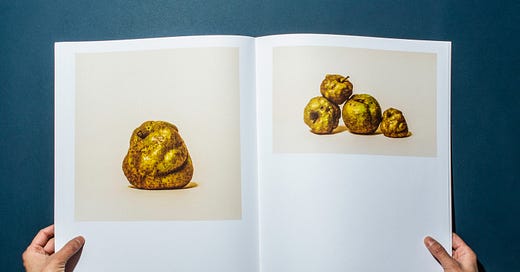





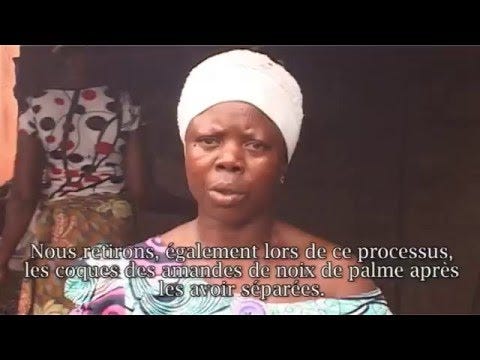

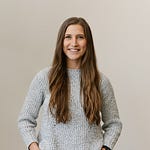

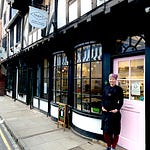


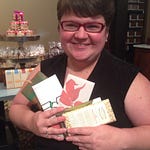
Share this post